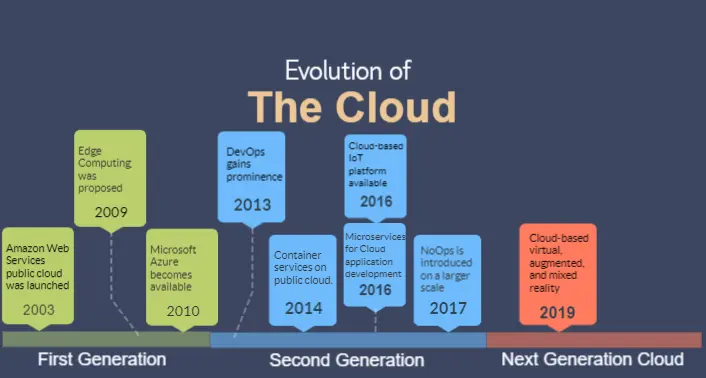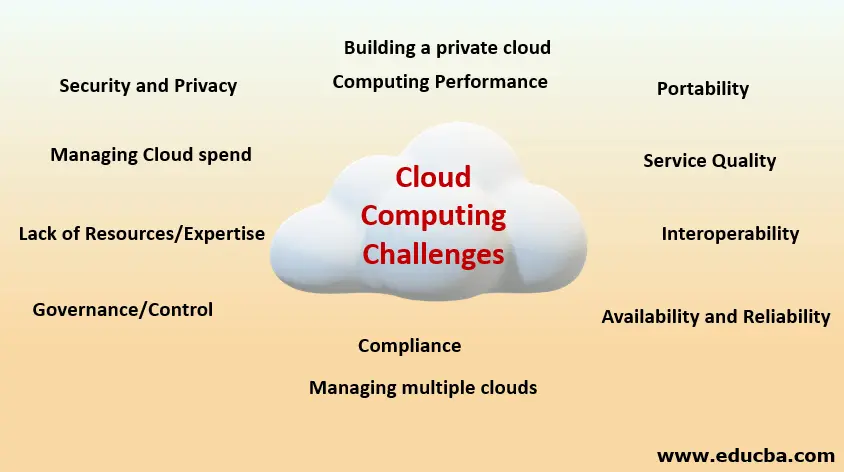In the ever-evolving landscape of technology, few concepts have reshaped the way businesses operate and individuals access information as profoundly as cloud computing. As we step into 2024, the world of cloud computing continues to expand and transform, offering new possibilities and solutions. This comprehensive exploration seeks to demystify cloud computing, unravelling its intricacies, and providing insights into its current state and future trajectory.
Understanding Cloud Computing: A Primer
Defining Cloud Computing
At its core, cloud computing refers to the delivery of computing services over the internet, allowing users to access and utilise resources without the need for on-premises infrastructure. These services include computing power, storage, databases, networking, analytics, and more. The metaphorical “cloud” represents the internet, symbolising the abstraction of complex infrastructure and the simplicity of accessing resources remotely.
Key Characteristics of Cloud Computing
- On-Demand Self-Service: Users can provision and manage computing resources as needed, without requiring human intervention from service providers.
- Broad Network Access: Cloud services are accessible over the internet from various devices, promoting ubiquitous access and flexibility.
- Resource Pooling: Computing resources are pooled to serve multiple customers, with different physical and virtual resources dynamically assigned and reassigned.
- Rapid Elasticity: Resources can be rapidly and elastically provisioned or released to scale with demand, ensuring optimal performance and cost efficiency.
- Measured Service: Cloud computing resources are metered, allowing users to pay for only the resources they consume, leading to cost-effectiveness and efficient resource allocation.
The Evolution of Cloud Services

Infrastructure as a Service (IaaS)
IaaS provides virtualized computing resources over the internet. Users can rent virtual machines, storage, and networking components, allowing for greater flexibility and scalability without the need to invest in physical hardware.
Platform as a Service (PaaS)
PaaS goes a step further by providing a platform that includes not only infrastructure but also development tools, making it easier for developers to build, deploy, and manage applications without dealing with the complexities of underlying infrastructure.
Software as a Service (SaaS)
SaaS delivers software applications over the internet, eliminating the need for users to install, maintain, and manage the software locally. This model includes popular applications like email, collaboration tools, and customer relationship management (CRM) software.
The Architecture of Cloud Computing
Public Cloud
Public clouds are owned and operated by third-party cloud service providers. These providers deliver computing resources, such as servers and storage, over the internet. Public clouds are accessible to anyone and are suitable for a wide range of applications.
Private Cloud
Private clouds are operated solely for a single organisation. They can be managed by the organisation itself or by a third party. Private clouds offer greater control over resources and security but may entail higher costs.
Hybrid Cloud
Hybrid clouds combine public and private cloud models, allowing data and applications to be shared between them. This approach offers greater flexibility, enabling organisations to optimise their workload placement based on factors like cost, security, and performance requirements.
Cloud Deployment Models
Multi-Cloud
Multi-cloud involves using services from multiple cloud providers. This strategy aims to avoid vendor lock-in, enhance redundancy, and optimise costs by selecting the best services from different providers.
Edge Computing
Edge computing brings computation and data storage closer to the source of data generation. This minimises latency and optimises bandwidth, making it ideal for applications that require real-time processing.
Serverless Computing
Serverless computing, also known as Function as a Service (FaaS), allows developers to execute code in response to events without the need to manage server infrastructure. It enables a pay-as-you-go model, where users are charged based on actual execution of functions.
Key Technologies Shaping Cloud Computing
Artificial Intelligence and Machine Learning
AI and machine learning are increasingly integrated into cloud services, providing businesses with tools to analyse data, gain insights, and automate processes. Cloud platforms offer scalable infrastructure for training and deploying machine learning models.
Blockchain Technology
Blockchain is finding applications in cloud computing, particularly in enhancing security and transparency. It ensures the integrity of data and transactions, making it a valuable addition to cloud-based systems.
Containers and Microservices
Containers and microservices architecture have become integral to cloud computing. They enable developers to build, deploy, and scale applications more efficiently by encapsulating them in lightweight containers and breaking them down into smaller, manageable services.
Challenges and Considerations in Cloud Adoption

Security Concerns
While cloud providers implement robust security measures, data breaches and cyber threats remain significant concerns. Organisations must implement additional security measures and adopt best practices to protect sensitive data in the cloud.
Data Privacy and Compliance
Data privacy regulations, such as GDPR, demand careful consideration in cloud adoption. Organisations need to ensure compliance with regional and industry-specific regulations when storing and processing data in the cloud.
Cost Management
While cloud computing offers cost advantages, it’s crucial to manage resources efficiently to avoid unexpected expenses. Adopting a well-thought-out cost management strategy is essential for optimising cloud spending.
The Future of Cloud Computing: Trends and Predictions
Edge Computing Expansion
As the Internet of Things (IoT) grows, edge computing is expected to become more prevalent. Edge computing reduces latency by processing data closer to the source, making it crucial for applications requiring real-time responses.
Quantum Computing Integration
The advent of quantum computing holds the potential to revolutionise cloud computing. Quantum computing can solve complex problems at unprecedented speeds, opening up new possibilities for scientific simulations, cryptography, and optimization tasks.
Serverless Architecture Dominance
Serverless architecture is predicted to become more dominant as organisations seek to streamline development processes. Developers can focus on writing code without managing servers, leading to increased agility and cost savings.
Best Practices for Cloud Computing Adoption
Comprehensive Training and Skill Development
Investing in training and skill development is crucial for successful cloud adoption. Teams should be well-versed in cloud technologies, security protocols, and best practices. Cloud providers often offer certification programs that validate expertise in their platforms.
Robust Data Backup and Recovery Strategies
Despite the reliability of cloud services, data loss can occur. Implementing robust backup and recovery strategies ensures that critical data is safeguarded. Regularly test backup and recovery processes to guarantee their effectiveness in real-world scenarios.
Implementing a Cloud-Centric Security Model
Security is paramount in cloud computing. Adopting a cloud-centric security model involves encrypting data, managing access controls meticulously, and implementing monitoring and detection tools to identify and respond to security threats promptly.
Optimising Resource Usage
Efficiently managing cloud resources is essential for cost control. Regularly monitor resource usage, identify underutilised instances, and scale resources based on demand. Utilise tools provided by cloud providers for cost tracking and optimization.
Real-World Applications of Cloud Computing
Cloud in Healthcare
Cloud computing has revolutionised the healthcare industry, facilitating seamless access to patient records, enhancing collaboration among healthcare providers, and enabling advanced analytics for medical research. Cloud solutions in healthcare contribute to improved patient care and outcomes.
Cloud in Finance
Financial institutions leverage cloud computing for enhanced data security, real-time transaction processing, and scalable infrastructure. Cloud-based analytics enable financial institutions to derive insights from massive datasets, aiding in risk management and decision-making.
Cloud in Education
Cloud computing has transformed the education sector by providing scalable and accessible resources. Educational institutions use cloud platforms for collaborative learning, hosting virtual classrooms, and delivering online courses to a global audience.
Emerging Technologies Shaping Cloud Computing

5G Technology
The rollout of 5G networks enhances the capabilities of cloud computing by providing faster and more reliable connectivity. This synergy between 5G and the cloud enables real-time applications, IoT advancements, and seamless user experiences.
AI-driven Cloud Services
Integrating artificial intelligence into cloud services results in smarter and more efficient platforms. AI-driven cloud services offer advanced analytics, natural language processing, and machine learning capabilities, empowering organisations to extract meaningful insights from data.
Extended Reality (XR) Integration
Extended Reality, encompassing virtual reality (VR) and augmented reality (AR), benefits from cloud computing for rendering complex simulations and delivering immersive experiences. Cloud-powered XR applications enhance training simulations, gaming, and collaborative design environments.
Challenges on the Horizon
Security and Privacy Concerns
As cloud environments become more complex, security and privacy concerns persist. Addressing these challenges requires continuous vigilance, adherence to best practices, and staying informed about evolving security threats.
Regulatory Compliance
Navigating the intricate landscape of global data protection regulations is an ongoing challenge. Organisations must ensure compliance with various regulatory frameworks, understanding the implications of data residency and sovereignty requirements.
Environmental Impact
The energy consumption associated with data centres powering cloud services raises environmental concerns. Cloud providers are increasingly focusing on sustainable practices, but the industry must continue exploring eco-friendly solutions.
Conclusion:
The demystification of cloud computing in 2024 reveals a dynamic and transformative landscape that goes beyond mere storage and processing. It encapsulates a holistic approach to technology adoption, reshaping industries, empowering businesses, and enhancing individual experiences.
As organisations and individuals embark on their cloud journeys, understanding the nuances of deployment models, emerging technologies, and best practices becomes pivotal. The cloudscape ahead promises continuous innovation, and those well-versed in cloud computing will find themselves at the forefront of a technological revolution that transcends traditional boundaries.
In the ever-evolving story of cloud computing, each chapter unveils new possibilities and challenges. Whether you’re an IT professional shaping the digital infrastructure of tomorrow or an enthusiast exploring the potential of cloud services, embracing the transformative power of the cloud will undoubtedly be a defining factor in the technological landscape of the years to come. As we navigate the cloudscape ahead, let curiosity, adaptability, and a commitment to best practices be the guiding forces on this transformative journey.

Insightful Blogger Navigating News, Business, Tech, and More on its newsy: Meet Herman Danner, a seasoned blogger on its newsy, with a keen eye for dissecting the latest in news, unraveling business dynamics, and exploring the ever-evolving landscape of technology. Herman’s blogs offer a multifaceted perspective on various niches, providing readers with insightful analyses and a comprehensive view of the fast-paced world we live in. Join Herman on its newsy for a thought-provoking journey through news, business, tech, and beyond. Contact: [email protected]